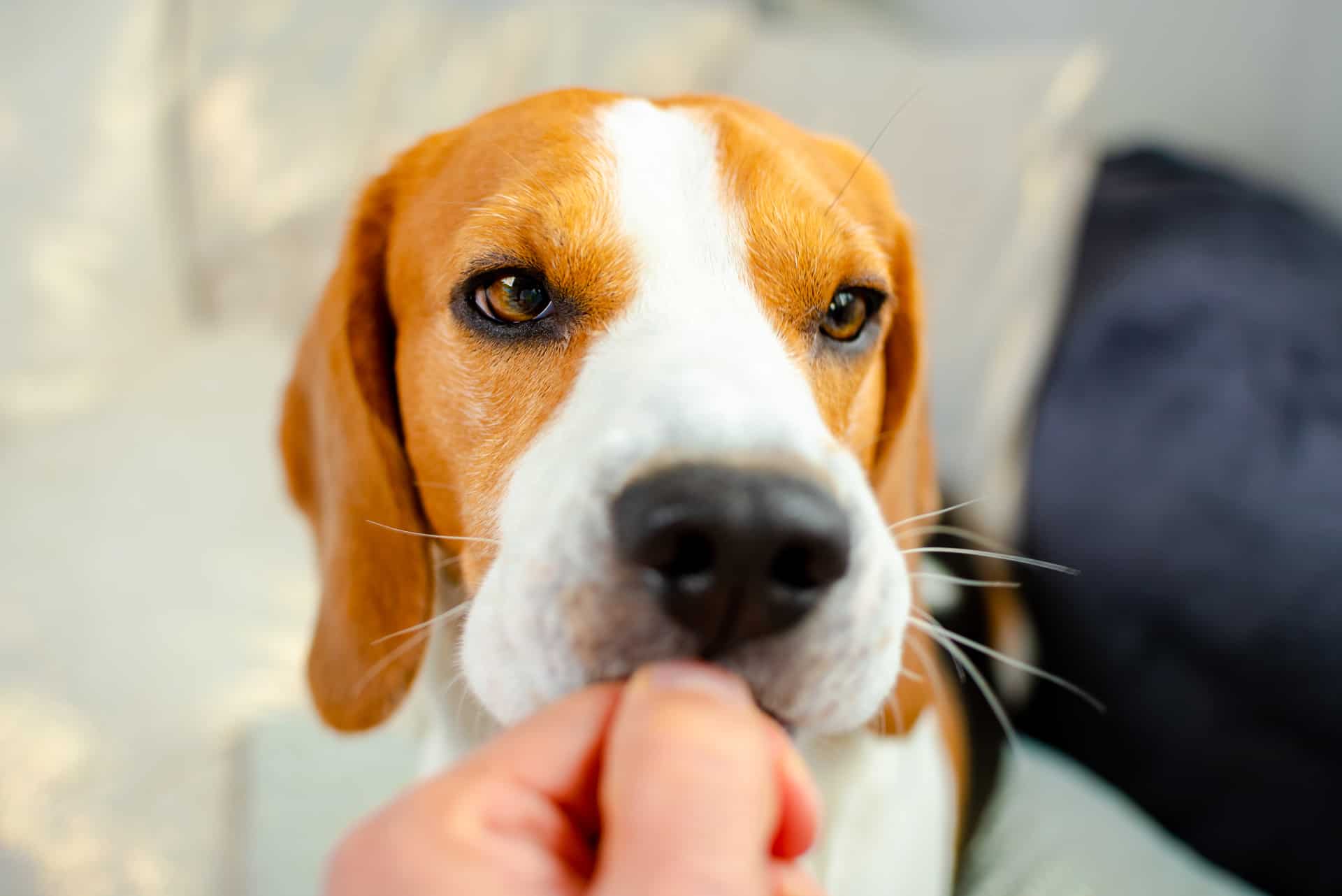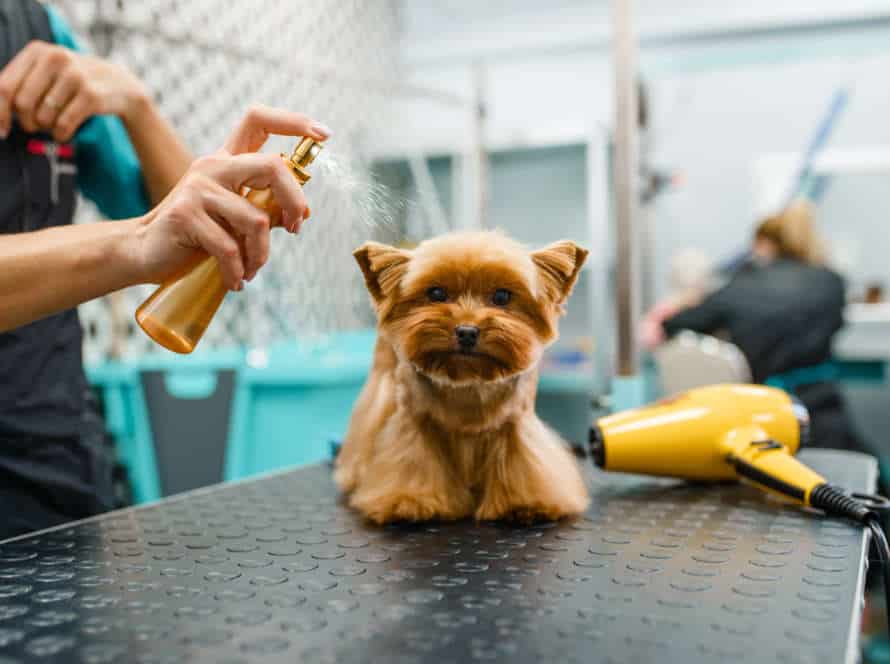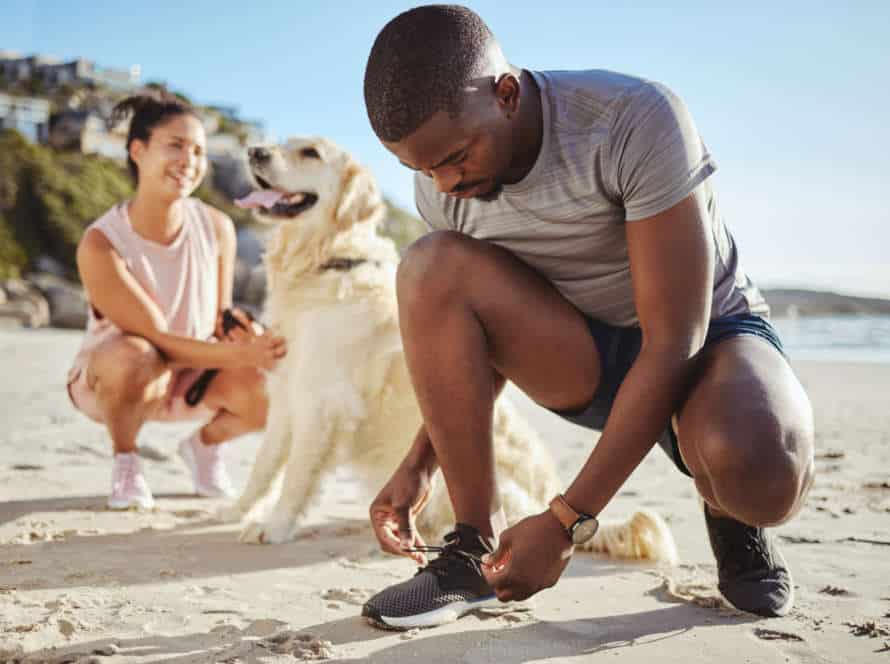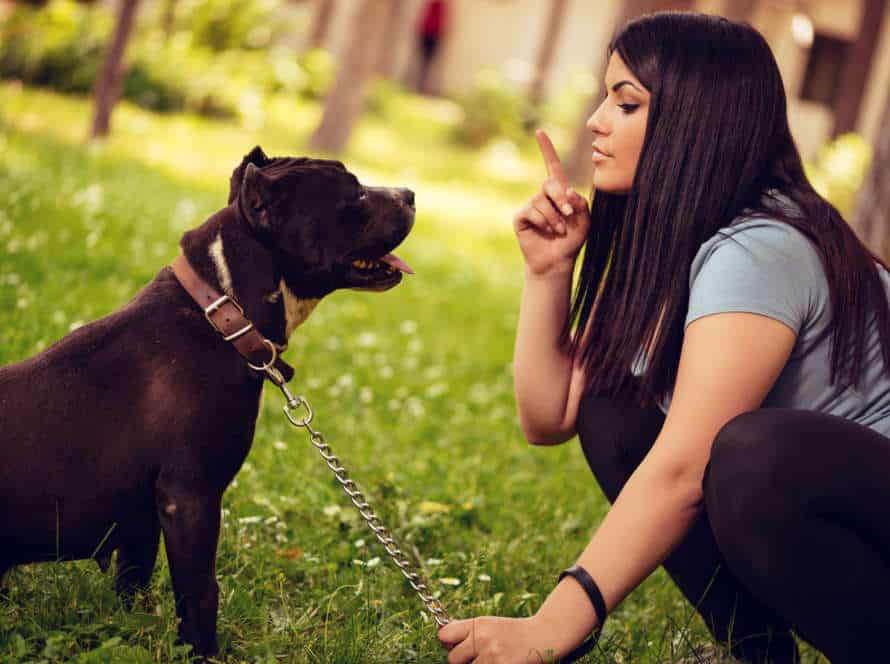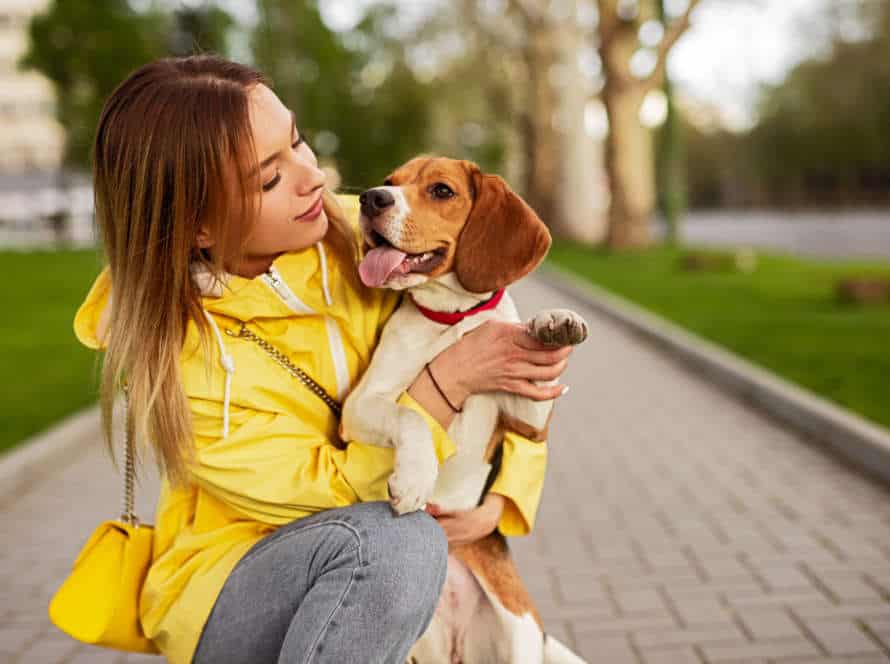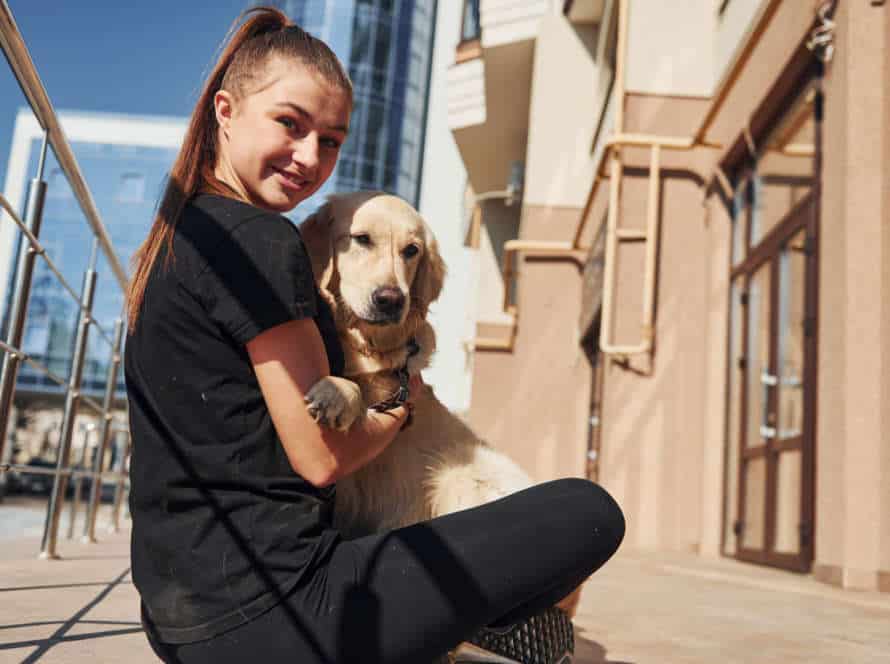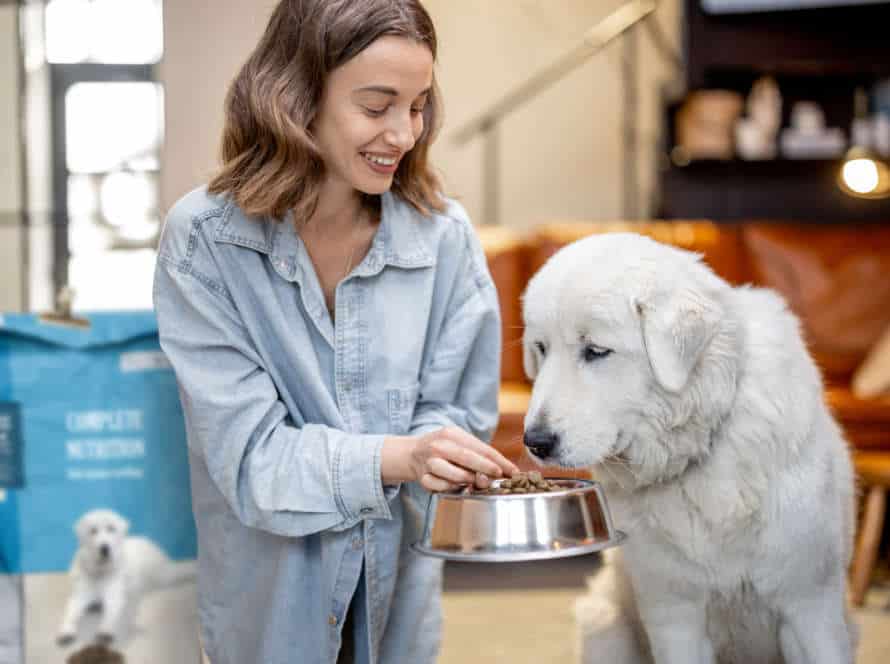The Hidden Benefits of Positive Reinforcement in Dog Training
Positive reinforcement is an awesome and humane way to train your pooch! It has hidden benefits beyond basic commands. These are:
- Obedience & responsiveness to orders
- Emotional wellbeing & reduced anxiety in your pup
- A stronger bond with your pet
- Encourages good behavior & discourages bad
- Reduced aggression towards other animals & people
- More confidence in your pup.
By rewarding good behavior instead of punishing bad, positive reinforcement leads to long-lasting results. Pro Tip: Use yummy, high-value treats as rewards to maximize effectiveness!
The Power of Positive Reinforcement in Training
Positive reinforcement is top-notch for training doggies. With it, you reward the desired behavior with a treat or praise. This increases the chance of them doing it again. Plus, it has hidden advantages that’ll make the training even better!
Let’s explore some of them now:
What is positive reinforcement?
Positive reinforcement is a psychological strategy used in animal and human training. It involves providing a reward (like treats or praise) after desired behavior. This increases the chance of the behavior happening again.
In dog training, positive reinforcement emphasizes rewarding good behavior instead of punishing bad. This is effective in promoting desirable behaviors and building trust between dogs and their owners. Positive reinforcement-based training has many benefits, including reducing mental and emotional issues, improving cognitive abilities, and helping with socialization.
It’s important to use positive reinforcement consistently and communicate clearly to maximize its benefits in dog training.
The science behind positive reinforcement
Positive reinforcement is a training method rooted in behaviorism. It rewards desired behaviors – making the dog more likely to repeat it.
This works by activating reward centers in the brain and releasing feel-good hormones like dopamine. Then, the behavior is reinforced and is more likely to happen again.
Plus, this strengthens the bond between the dog and the trainer. As the dog associates training sessions with positive experiences, it leads to more trust.
Pro Tip: Always use positive reinforcement! Reward good behavior quickly and don’t scold or punish. This helps to create effective and positive training sessions.
How positive reinforcement differs from other training methods
Positive reinforcement is a training approach that rewards and encourages desirable behavior. Unlike other approaches such as punishment or aversive training, this method focuses on building a strong connection between the teacher and learner. It also creates a positive learning atmosphere.
The advantages of this method include better learning retention and recall, as the learner links the behavior with a positive outcome. It also leads to better long-term behavior modification, as the learner gets to enjoy the learning process.
Plus, it helps reduce stress and anxiety, as fear and intimidation are not part of the method. Besides, it increases trust and confidence between the trainer and trainee, resulting in improved performance and greater success.
In conclusion, positive reinforcement is an effective, safe, and humane way of teaching. It stresses positive feedback and encouragement, rather than fear and punitive measures.
Benefits of Positive Reinforcement in Dog Training
Positive reinforcement is a powerful tool for training dogs. It has been shown to be humane and successful in teaching pups various skills and behaviors. There are many advantages to this type of training – it is more entertaining for the pup and their owner, bonds them together, the learning is more efficient, and even helps to better their behaviour in tense situations.
Let’s have a look at the perks of positive reinforcement in dog training!
Stronger Bond with Your Dog
Positive reinforcement in dog training can give a boost to the bond between you and your pup. Plus, it can benefit their behavior and mental wellbeing! Let’s look at the advantages:
- It makes learning fun and fast for your pooch.
- Enhances obedience and encourages good habits.
- Builds trust between you and your pup.
- Gives them more self-belief and contentment.
- Diminishes aggressive behavior and alleviates anxiousness.
When you use positive reinforcement – like treats, toys, and praise – your dog will master new skills and know they are appreciated for their hard work.
Increases Dog’s Confidence
Positive reinforcement is great for boosting your pup’s confidence. Here are some ways it helps:
- Trust grows: By giving treats or praising when they do something right, trust forms between you and your pup. This makes them feel secure and confident.
- They get control: Positive reinforcement enables your dog to understand what they are doing right. This gives them power over their training, boosting their confidence.
- Less fear and anxiety: Positive reinforcement creates positive associations with situations or items that were once stressful.
- Better problem-solving: During the training, your dog develops better problem-solving skills. This gives them confidence and the ability to think of solutions.
Using positive reinforcement makes your pup happier, more confident, and better behaved in the end.
Decreases Behavioral Problems
Positive reinforcement in dog training can help make relationships between dogs and owners more harmonious. It involves rewarding good behavior and ignoring or redirecting bad behavior.
These are the benefits:
- Decreases aggressive behavior. Positive reinforcement can help reduce aggression by reinforcing good behavior and avoiding triggers.
- Improves communication. This helps owners talk to their pets, strengthening the bond.
- Enhances confidence. Rewarding good behavior builds confidence in dogs, making them more focused.
- Generalizes behavior. Dogs trained with positive reinforcement can adapt better to new situations.
Positive reinforcement is a humane, effective way to train dogs – it brings more than just obedience.
Positive Reinforcement Techniques for Dog Training
Positive reinforcement is great for dog training! It helps to create a strong bond between pup and owner. Rewards like treats, praise, and toys are given for desired behavior. If you consistently reward your dog for good behavior, they’ll learn that it’s the way to go – and be more motivated to do the right thing.
Here are some of the advantages of positive reinforcement in dog training:
Clicker Training for Positive Reinforcement
Clicker Training is a successful and popular positive reinforcement way to train dogs. It brings benefits for both the dog and its owner. Here’s why:
- It builds trust and respect between you and your pup.
- Improves your pet’s confidence.
- Helps decrease stress, fear, and uneasiness.
- Allows your dog to learn at its own speed, enabling better independent thinking.
- No physical force, punishment, or intimidation needed.
Thus, Clicker Training for Positive Reinforcement is a humane, successful, and long-lasting method to train your dog and get the desired outcomes.
Treat and Reward-Based Training
Treat and reward-based training is a popular way to train dogs using positive reinforcement. This involves rewarding good behavior to encourage them to repeat it.
The Hidden Benefits of Positive Reinforcement in Dog Training:
- Strengthens the bond between dogs and owners. This trust and respect leads to a strong bond.
- Reduces fear and anxiety. Traditional training may cause pain, but positive reinforcement does not. It builds confidence instead.
- Improves cognitive abilities. Dogs learn to connect actions and consequences via positive reinforcement.
- Lasting results. This forms a habit that is motivated by positive results.
Pro tip: Positive reinforcement is not only treats. Praise, attention, and playtime can work too.
Praise and Affection Training
Praise and affection training is a positive reinforcement technique that is ideal for dog training. You reward your pup with verbal praise and physical affection when they do something good. It’s beneficial for both you and your pup!
Benefits:
- Builds trust between the two of you.
- Teaches obedience without fear or anxiety.
- Improves the dog’s confidence and willingness to learn.
- Reduces aggressive or destructive behavior.
- Creates a happy and healthy environment.
To use this technique, give verbal praise and physical affection when your pup does something you want them to do. Eventually, your pup will link good behavior with rewards. Pro Tip: Use an upbeat tone when praising your pup to show them they did something right.
Common Mistakes to Avoid with Positive Reinforcement Training
Positive reinforcement training can be a great way to boost good behaviour in our furry pals. But, with any type of pup training, it’s important to know the mistakes owners may make. Here, we’ll look at some common errors to dodge when using positive reinforcement. That way, pet owners can help their dogs reach their full potential and have happy and healthy pets.
Not Consistency in Rewarding
Positive reinforcement is a great dog training technique. Reward good behavior to encourage it again. One mistake to avoid is not being consistent when rewarding your pup. Inconsistent rewards can mean forgetting or even rewarding bad behavior. This makes it hard for your dog to know what is desired or undesired. Thus, it’s essential to have a consistent positive reinforcement routine.
Consistent rewards make the learning process easier and faster. This encourages your dog to keep good behavior. Pro Tip: Always have consistent rewards like treats, toys, and praise ready. Then you can quickly reinforce good behavior when it happens.
Using the Wrong Types of Rewards
Using the wrong rewards is a mistake to dodge when training with positive reinforcement and dogs. Not all rewards are the same, and not all dogs respond the same. Examples of rewards to avoid:
- Food that your dog isn’t interested in – if unenjoyed, it won’t work.
- Rewards your pup can’t see or hear – they’re more likely to respond to treats or toys they can see or hear.
- Inconsistent rewards – confusion and disinterest may occur if not consistent.
Use the right rewards – treats, praise, play – to reinforce good behavior and create a strong bond. Don’t forget: positive reinforcement is about rewarding the good stuff, not punishing the bad.
Tip: Be patient and consistent with rewards. It takes time and effort, but eventually you’ll have a well-behaved, happy pup!
Timing and Reinforcement Connection
Timing & reinforcement connection are vital for successful Positive Reinforcement Training for dogs. To ensure success and build a strong bond, owners should avoid mistakes.
One mistake is timing reinforcement late or early, causing confusion for the pup. It’s important to connect the reinforcement to the desired behavior. Reinforcing only actions owners want to continue is key.
Another mistake is inconsistent reinforcement. This can be confusing & impede progress. Reinforcement should be paired with positive, clear communication. This will encourage trust & a stronger bond.
By avoiding mistakes & building a positive reinforcement system, owners can witness the hidden benefits. Including increased obedience, trust & overall happiness for both pup & owner.
Advanced Tips for Positive Reinforcement Dog Training
Positive reinforcement is a great tool to train dogs. It is an efficient way to direct pup behaviour and keep them emotionally healthy. With positive reinforcement, you can reward your pup for wanted behaviour and discourage unwanted behaviour. In this article, we’ll be discussing advanced tips and tricks for positive reinforcement dog training.
Shaping Techniques
Shaping is a useful dog training technique. It means breaking big behaviors down into tiny, achievable steps. Here are some tips!
- Start simple. E.g. your dog touching your hand or sitting down.
- Click and reward. Whenever your pup does the right thing, click a clicker or say a verbal marker. Then reward with a treat or praise.
- Progress. Increase the difficulty by adding more steps or making the existing steps harder.
- Be patient. Shaping takes time and repetition. If you or your pup get frustrated, take a break.
- Keep it short. Have frequent, brief training sessions. This will help your pup remember what you teach.
Positive reinforcement has lots of hidden benefits. It strengthens the bond between pup and owner. Plus, it helps give pup mental stimulation, leading to better behavior.
Targeting and Luring
Targeting and luring are two advanced tools in positive reinforcement dog training. They can help speed up the learning process and make the bond between the trainer and the dog stronger.
Targeting means teaching the pup to touch an object, usually with their nose or paw, when commanded. This can be used to teach tricks like jumping or playing dead.
Luring is when a treat or toy is used to guide the dog into a behavior. For example, holding a treat above their head to make them sit.
Positive reinforcement training has been shown to increase obedience and lower stress in dogs. By using targeting and luring, you can make learning fun and enjoyable for your pet while creating a strong bond.
Pro Tip: Use high-value treats during training to keep your dog motivated and interested in learning.
Positive Reinforcement in Socialization and Obedience Training
Using positive reinforcement to train your pup has been shown to be a kind and useful strategy. Here’s some expert advice for successful positive reinforcement with your dog:
- Give rewards that your pup loves – like treats or toys.
- Reward the behavior when it happens for the best results.
- Keep things exciting with varying rewards.
- Use positive reinforcement in day-to-day life to keep good behavior going.
The advantages of positive reinforcement include building trust between you and your pup, better behavior without fear or aggression, and a stronger bond.
Pro Tip: Don’t forget to stay consistent with positive reinforcement. Practice regularly and give praise every time your pup does the right thing.
Frequently Asked Questions
Q: What is positive reinforcement in dog training?
A: Positive reinforcement involves rewarding desired behavior in dogs to encourage them to repeat that behavior in the future. This can be done through treats, praise, toys, or other positive stimuli.
Q: How does positive reinforcement differ from punishment in dog training?
A: Punishment focuses on discouraging or stopping unwanted behavior through negative consequences, such as yelling, physical force, or shock collars. Positive reinforcement, on the other hand, encourages and rewards good behavior, resulting in a happier, more well-behaved dog.
Q: What are some hidden benefits of using positive reinforcement in dog training?
A: Positive reinforcement not only improves a dog’s behavior, but also strengthens the bond between the dog and their owner, encourages better communication, and promotes a more positive and cooperative relationship.
Q: Can positive reinforcement be used to train all types of dogs?
A: Yes! Positive reinforcement is a versatile and effective training approach that can be used with all breeds, ages, and temperaments of dogs.
Q: How long does it take to see results from positive reinforcement training?
A: Results can vary depending on the dog, the behavior being trained, and the consistency of the training. However, with patience and consistency, most dogs show improvement within a few days or weeks.
Q: Are there any potential drawbacks to using positive reinforcement training?
A: While positive reinforcement is a safe and ethical training approach, it’s important to use it correctly and to understand that it may not work for every dog or situation. In some cases, additional training techniques may be needed.

